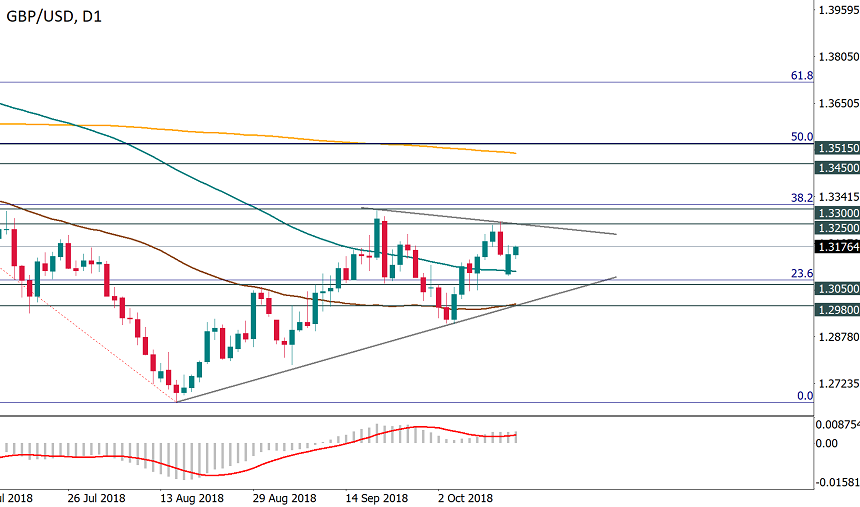Tips for trading the GBP this week
Although the United Kingdom will release several major economic indicators this week (labor market figures on Tuesday, inflation on Wednesday, and retail sales on Thursday), the key driver for the British pound will certainly be Brexit talks.
Political pressure is rising
The time is running out: Britain is set to leave the European Union in March 2019. However, it’s easy to say “leave” but how to accomplish such a thing in reality? No country has left the EU before. It’s necessary to determine what relations the UK and the EU will have in the future as the previous free trade arrangements will cease to be. In addition, there’s a big problem: a border between Northern Ireland (a part of Britain) and the independent Republic of Ireland that remains the EU member. Currently, there are no physical checks or infrastructure. Neither Britain nor the EU wants a “hard border” between the Irelands but they can’t agree on how to do that.

The EU proposes special trade conditions for the British Northern Ireland, but Britain wants the single rules for all its parts, not just the Northern Ireland. A temporary solution could prolong Britain’s stay in the customs union with the EU beyond December 2020, but this option is unpopular among many British politicians who campaigned for Brexit. That’s why there’s no Brexit agreement yet.
Why this week is important for the GBP?
On Monday, October 15, British Prime Minister Theresa May claimed that a Brexit deal was "still achievable" despite differences with the European Union. She also said that the Irish issue couldn’t “derail” the chances of striking a deal. However, it was this problem that made the talks fail this Sunday.
On Tuesday, Theresa May will hold a weekly cabinet meeting, and Brexit will be the main topic.
The EU summit will start on Wednesday (Theresa May was invited to make a guest speech), and Britain will join the discussion on Thursday, October 18. It’s expected that if the policymakers find that there is enough progress in Brexit talks, they will schedule a Brexit summit in the middle of November.
What to expect?
Traders need to understand one thing: either there will be a Brexit deal or there will be no deal. The last scenario means that British trade with the EU will suffer after it leaves the union (bad option for the GBP). The politicians may still delay the decision until November, December, and even January. The longer it takes to reach a compromise, the longer the GBP will stay under pressure.

If we consider all things, the risks for the GBP are negative ahead of the upcoming events. Technically, after this week’s opening gap, GBP/USD failed to close inside the body of the previous candlestick. It’s a negative sign. In addition, so far, the pair hasn’t managed to get above September high (1.33). Brexit troubles may push the pound to 1.3050 and the trendline support at 1.2980. If bears pull the pair below this level, selling pressure will intensify and it will become vulnerable for a decline to 1.28 and 1.27. The short-term recovery may be limited by 1.3250.
At the same time, you need to be aware that large speculators have very big short (selling) positions for the GBP, according to the data from the CFTC. As a result, a positive surprise may trigger the so-called short covering, i.e. a situation when sell positions are massively closed. In this case, GBP/USD will jump up. Above 1.33 the targets will be at 1.3450 (50-week MA) and 1.3515 (Fibo). The possibility of this outcome is, of course, lower.
Remember that it’s not the easiest task to trade on the Brexit news. However, if you monitor the news (here’s the link to our Telegram channel), you will have a good chance to catch a big movement of the price and benefit.